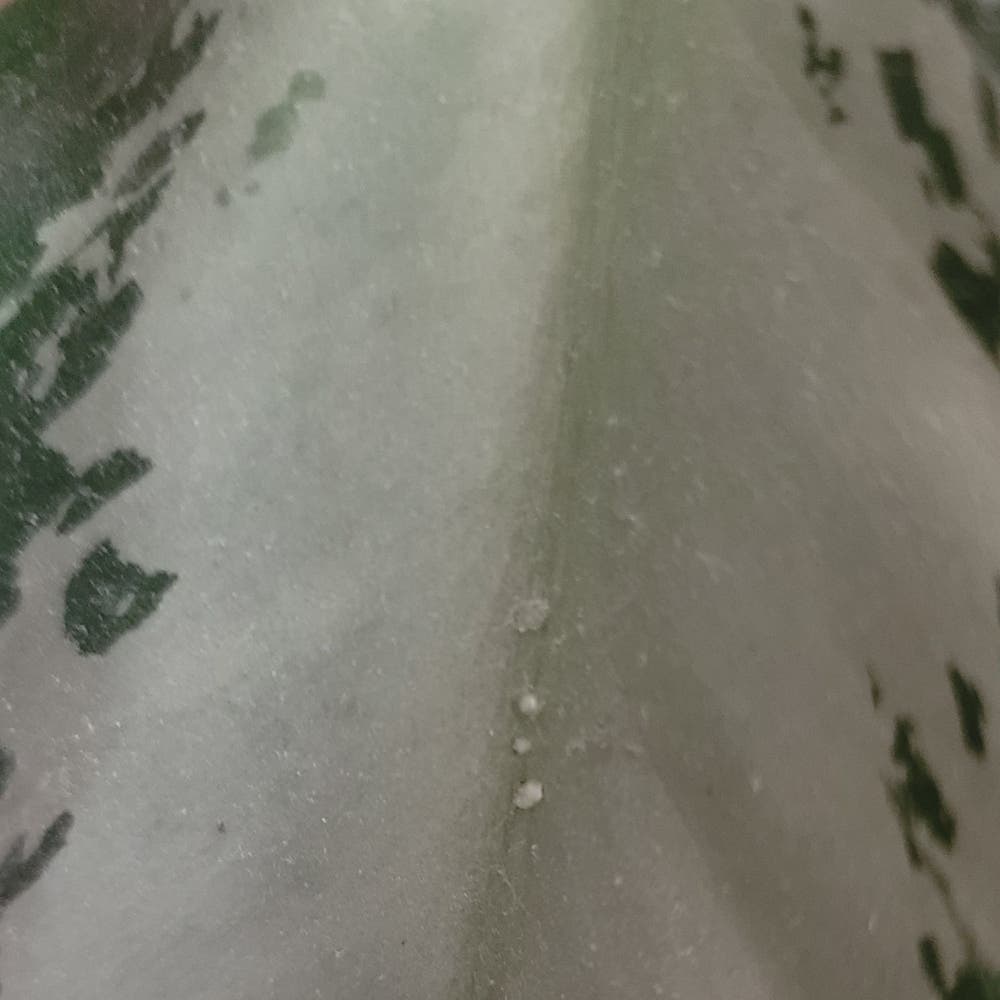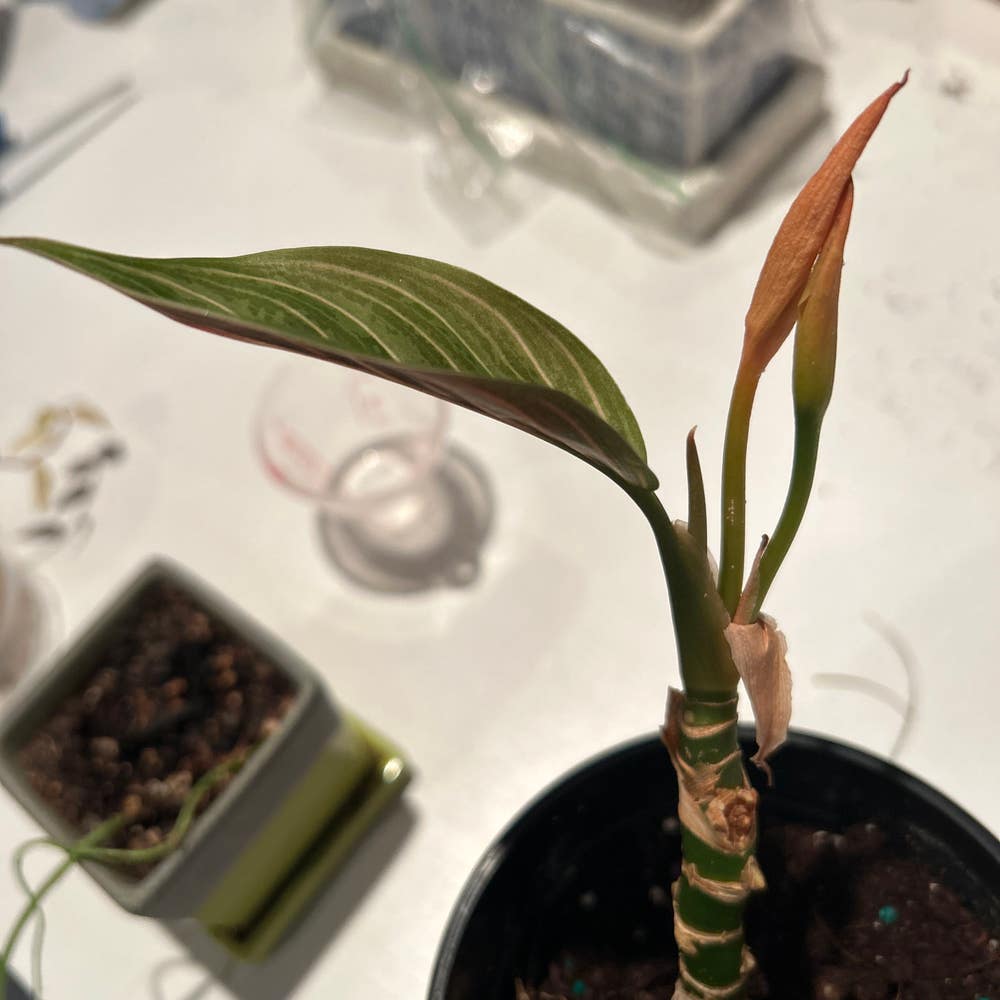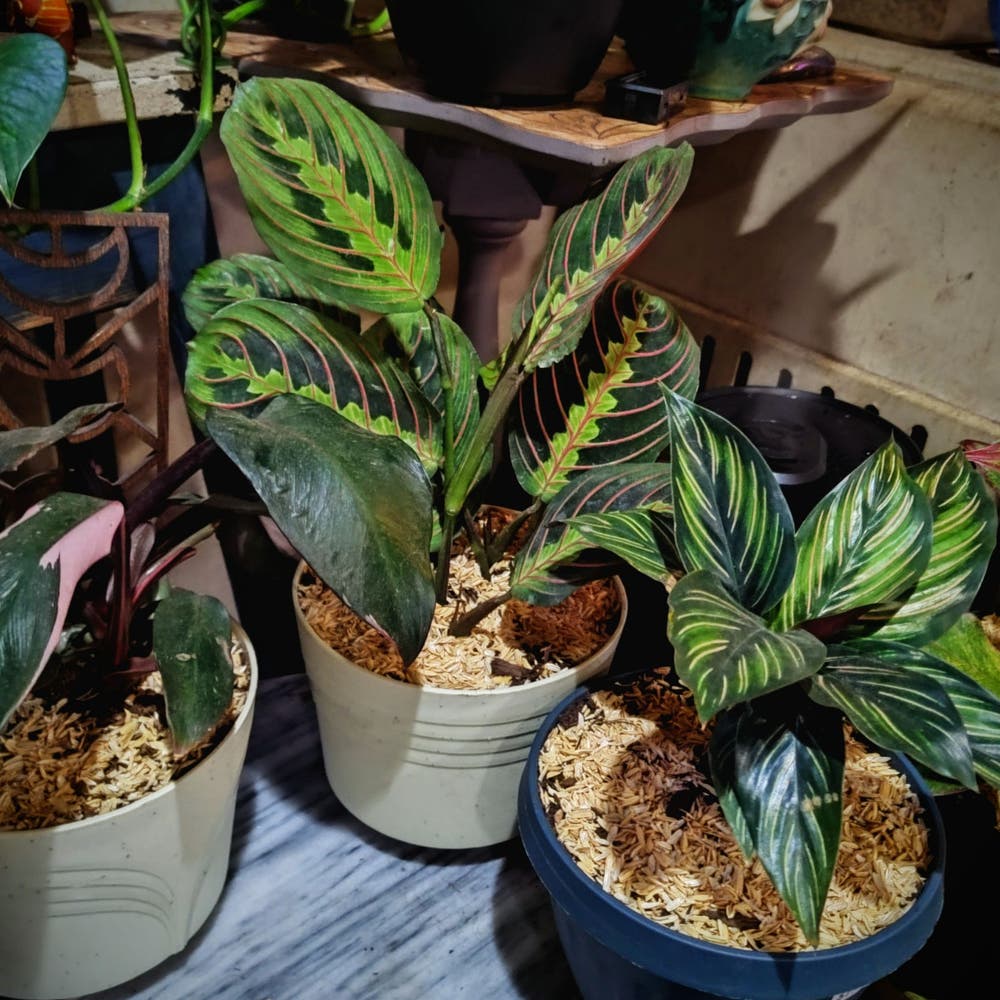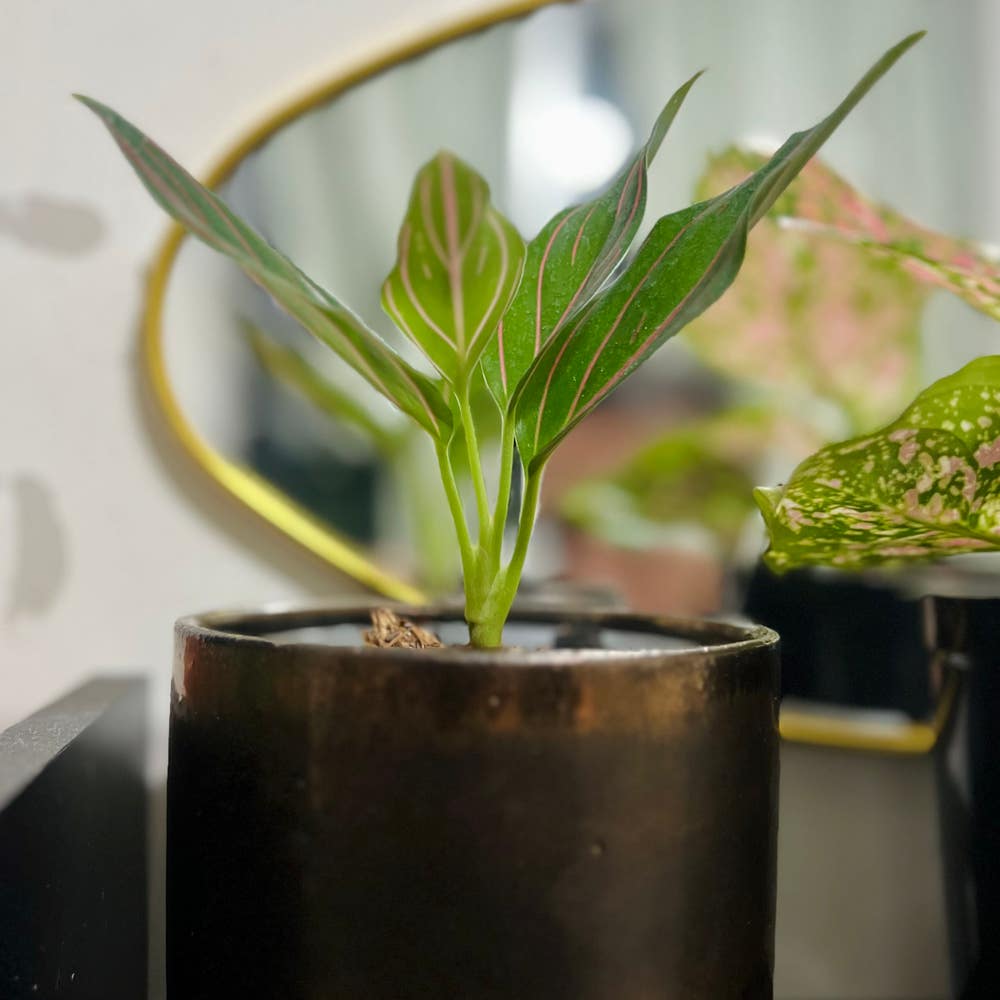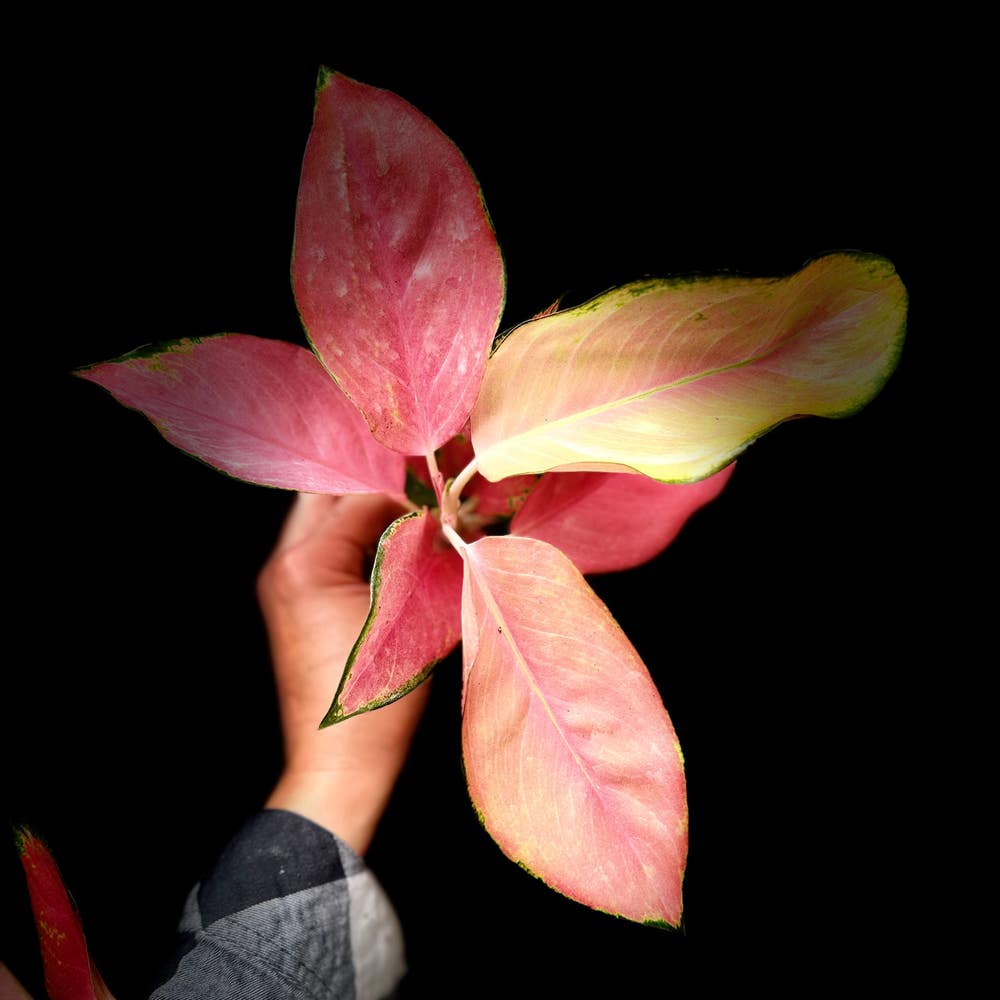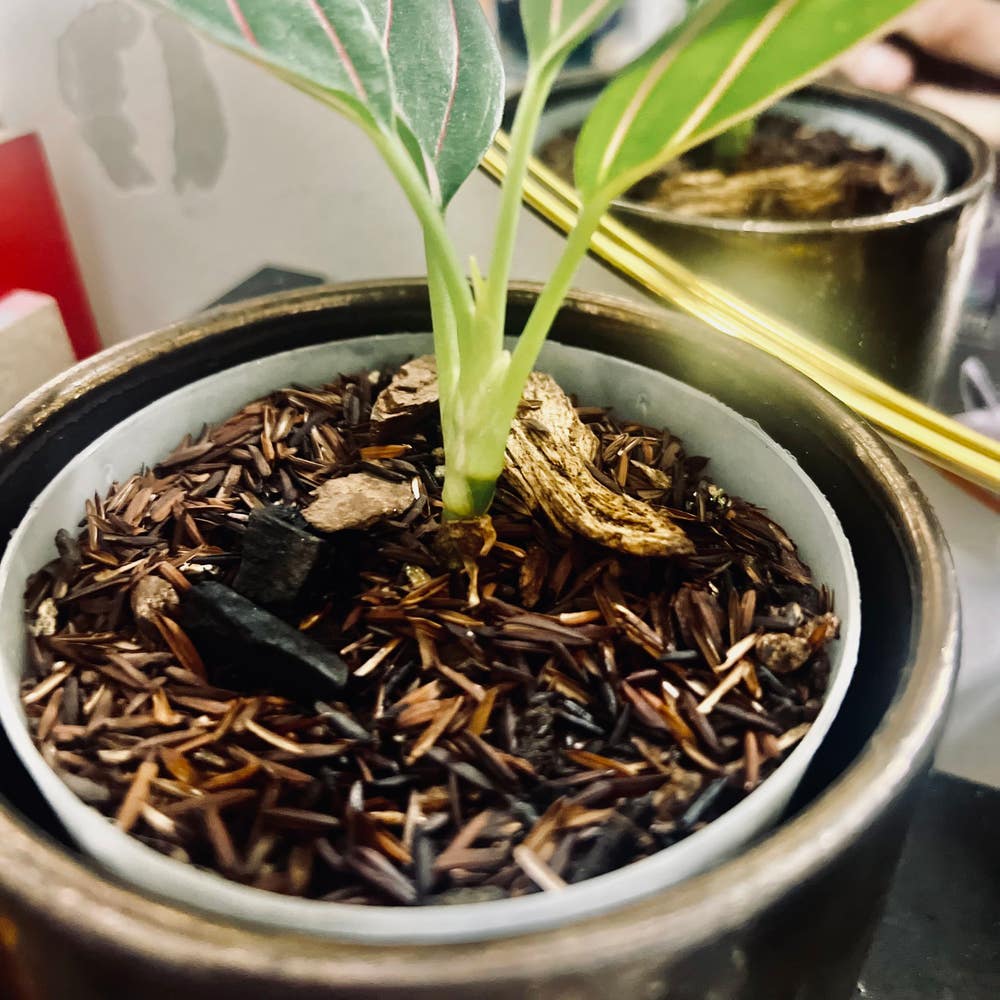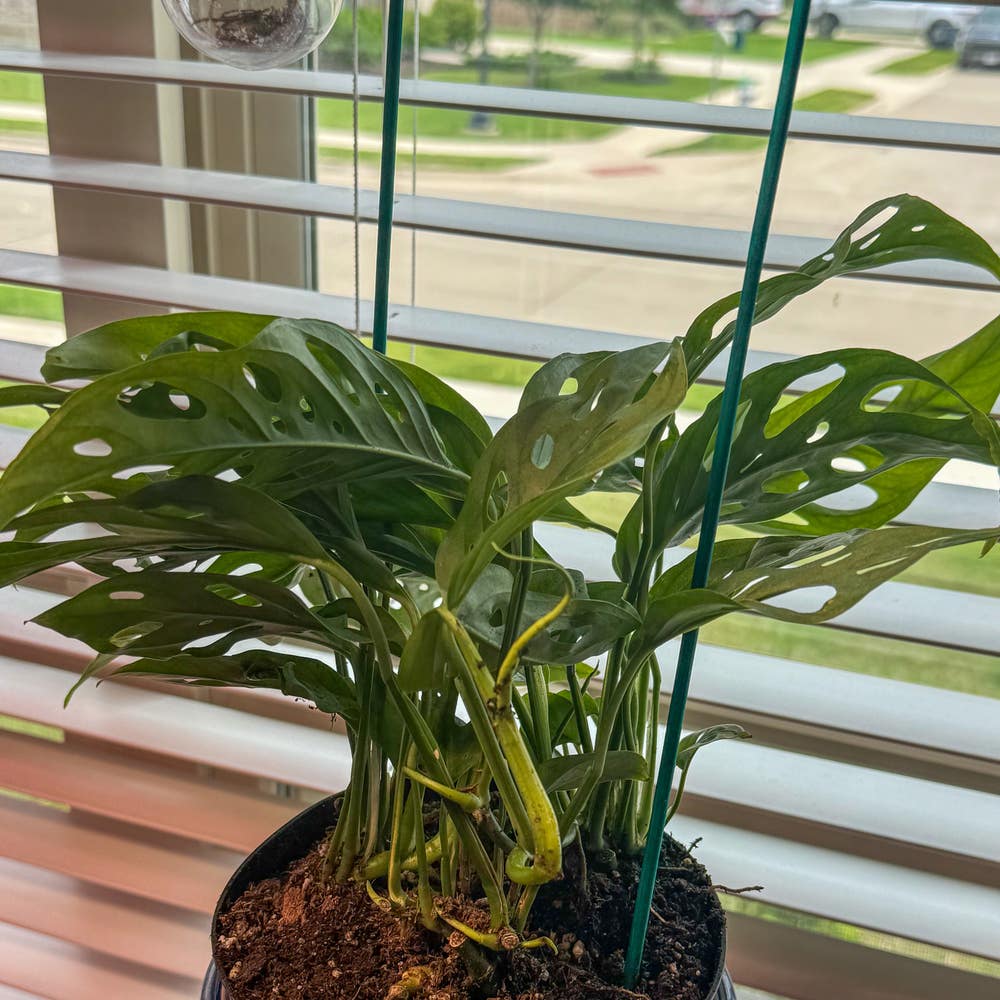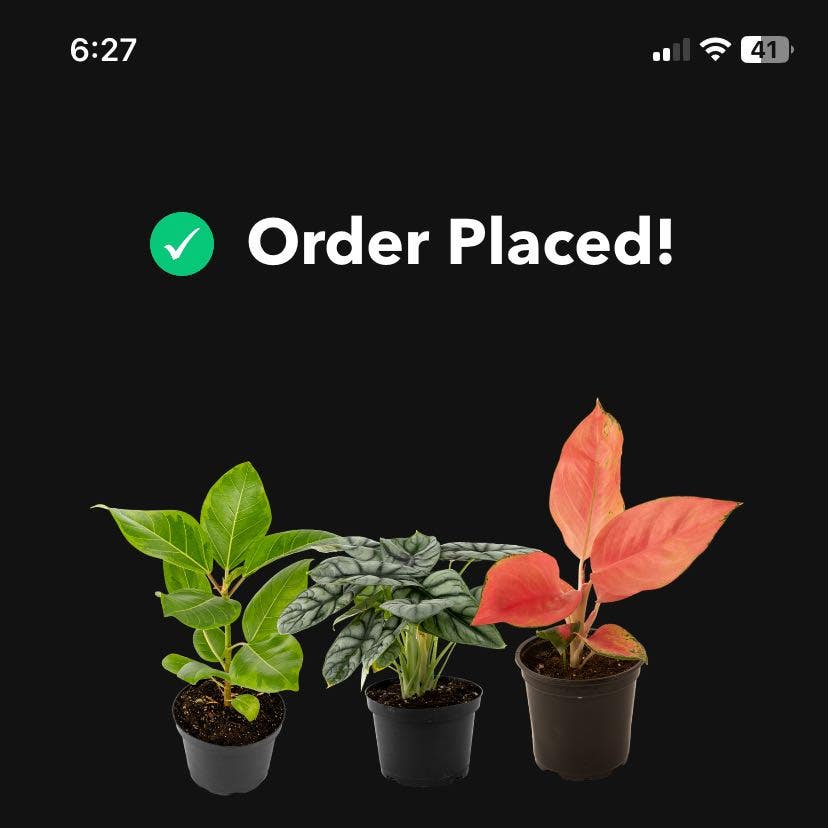
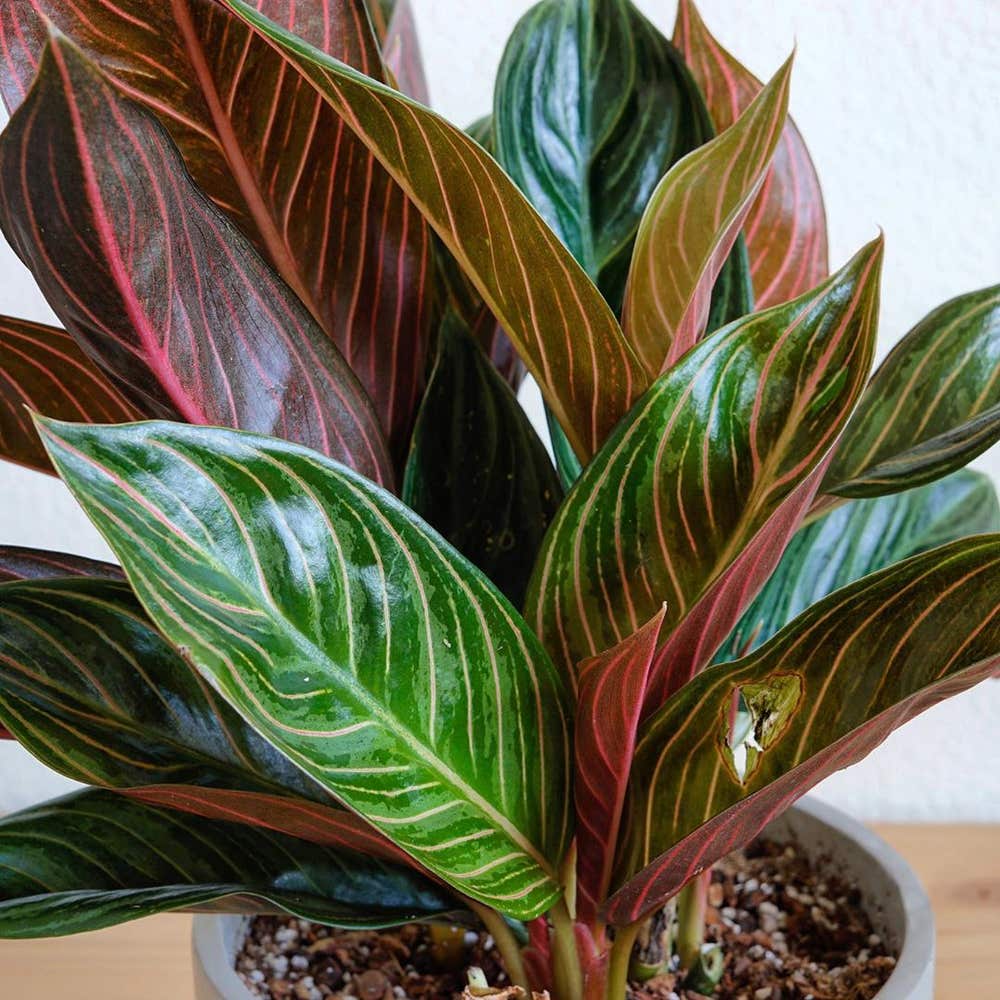



































Aglaonema Rotundum
About Aglaonema Rotundum
Chinese evergreens have been growing in homes throughout Asia for centuries as symbols of good fortune. They were introduced to the Western world in 1885. Their ancestors were cultivated starting in the 1930s and became especially successful in Florida, where most foliage plants are now produced. 🤞
Taxonomy

Aglaonema rotundum
Aglaonema
Araceae
Alismatales
Also known as
Chocolate Aglaonema, Chocolate Aglaonema, Chinese Evergreen, Philippine Evergreen and Chinese Evergreen Red Veining

How to care for Aglaonema Rotundum
How often to water your Aglaonema Rotundum

every 7
Aglaonema Rotundum needs 0.5 cups of water every 7 when it doesn’t get direct sunlight and is potted in a 5" pot.
Use our water calculator to personalize watering recommendations to your environment or download Greg for more advanced recommendations for all of your plants.

Water 0.5 cups every
7
Finding light for Chocolate Aglaonema in your home

a window
Aglaonema Rotundum can tolerate being far from a window and light source.
Place it less than 6 feet from a south-facing window to ensure it receives enough light to survive 💪.
Select your region to see how the current weather in your area affects the placement of Aglaonema Rotundum in your home 🏡.
How to fertilize Aglaonema Rotundum
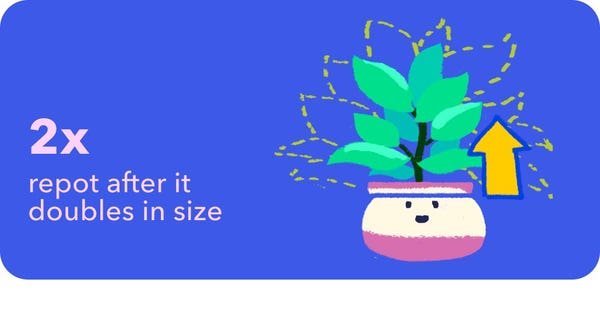
Most potting soils come with ample nutrients which plants use to produce new growth.
By the time your plant has depleted the nutrients in its soil it’s likely grown enough to need a larger pot anyway.
To replenish this plant's nutrients, repot your Aglaonema Rotundum after it doubles in size or once a year—whichever comes first.
-
White granules on the leaves? Isaw these White granules on my chinese evergreen today.. should i be worried? What should i do? #Aglaonema
-
My plant is yellowing and dying. I don’t know why. Help #Aglaonema
-
My chocolate aglaonema Hershey is loving summer! He came with some pretty big leaves but they fell off quickly. However, he still had a lot of life in him, so don’t be discouraged when plants shed stuff to grow more! #NewGrowth #PlantLove #MotherNature #Aglaonema #ChocolateAglaonema
-
Good evening, all y'all plant-loving people! I repotted A LOT of plants today! I added rice hulls on top of all the soil of those and also the soil of the plants that are going to stay in their current pots for a bit. Everyone got new potting mix and appropriately sized pots with drainage. I have a few new leaves coming in on Rorshach the #caladium , Frankenstein the #monsteradeliciosa , among some others. Frankenstein's new leaf is gonna be huge! I couldn't get a good pic of it though, maybe tomorrow. My #persianshield Kitty Maclane got repotted and so did Artemis the #syngonium , Kanouk the #tradescantiananouk , Vivian the #redprayerplant , and Mulan the #aglaonema ! I might have missed some, but that's most everyone that got new digs today. #calatheabeautystar #monstera #repotseason #happyplants #plantsmakepeoplehappy #plantaddict #plantcorner #marblequeenpothos #theamigos
-
Testing out this new pot - not repotting! - this time with my Rotundum. Looks awesome to me! #PlantsMakePeopleHappy #Aglaonema #PlantAddict
-
#GregPlantShop #PlantMail Alright everyone my 2 Aglaonema China Reds arrived today and here’s my thoughts! They’re beautifully colored plants and look healthy! I am so happy with the speed that they arrived. If I had any constructive feedback I’d say maybe try to contain the dirt a little better it was a tad messy, but I’m not too concerned about it. This will make a great Mother’s Day gift for my sister, and I got one for me as well💚 So happy to be able to participate in this beta testing! #PlantAddict #Aglaonema #PLANTMAFIA #GregGang #PlantTherapy #HappyPlants
-
Raymond is in a northern window for light but it loses approx 1 leaf every 2 weeks. What should I do #Aglaonema
-
#Aglaonema Rotundum finally showing some #NewGrowth 🥰🥰 (Sometimes referred to as ‘Tropic luckiest’ or ‘chocolate’) Hey #greggers #greggang I specifically requested him to be sent as a 'baby', as much as I could handle, of course - it took over a month, but now I finally see something sprucing out. I am simply in love with this one. Can't wait for it to grow and fill the pot with its beautiful curvy lines! #HappyPlants #PlantsMakePeopleHappy #PlantAddict #PlantTherapy #FreshLeafFriday
-
#PlantMail Monday! Order #3 from the #GregPlantShop What a Monday Ya’ll! But ending on a much higher note now!! My goal was to go outside my comfort zone with these #GregPlantShop orders.. So have some new additions to the Plant Fam! Swiss Cheese Plant Monstera Adansonii & China Red Aglaonema 🙌🙌🙌🤠👍 I saw yours @LaSiguanaba Red Aglaonema and had to snag it up! Once again they look Great! 😱😱😍🙌 #Monstera #MonsteraMob #MonsteraMonday #Aglaonema #GregGang #GregPlantShop #theamigos #HappyPlants #PlantsMakePeopleHappy #PlantAddict #PlantTherapy
-
#GregPlantShop is pretty legit. I went in thinking I’ll only want one plant but the design of the shop gave me ideas. Even my partner agreed that the shop was nice and well designed! The unboxing shall be the next great achievement. #HappyPlants #PlantsMakePeopleHappy #PlantAddict #PLANTMAFIA #AlocasiaAddicts #Alocasia #Aglaonema #Ficus #FicusGang @alex thanks 😊
Care Summary for Aglaonema Rotundum

Aglaonema Rotundum
 Greg recommends:
Greg recommends:
 Water
Water
0.5 cups every 7 days
 Placement
Placement
< 6ft from a window
 Nutrients
Nutrients
Repot after 2x growth
Based on the 4” pot your plant is in, and that it doesn’t get direct sunlight.

 Trending in your area
Trending in your area
 Similar to Aglaonema Rotundum
Similar to Aglaonema Rotundum

Alocasia 'Flying Squi…

Alocasia 'Chantrieri'

Alocasia Golden Bone

alocasia black zebrina

Aglaonema commutatum …

Alocasia Calfornia Go…

Aglaonema 'Stripe'

Aglaonema 'Favonian'

Alocasia Amazonica Pi…

Alocasia 'Dragon Scal…

Aglaonema 'Pink Splas…

Aglaonema Spitfire

Alocasia gagaena 'Cal…

Aglaonema

Aglaonema stenophyllum

Alocasia Green Shield

Alocasia longiloba
✨ Discover rare plants

Blushing Aeonium

Aloe 'Lavender Star'

Electric Fern

Philodendron 'Gabby'

Cleistocactus icosago…

Euphorbia Ammak

Vatricania guentheri

Philodendron eximium

Hylotelephium siebold…

Cereus peruvianus 'Pa…

Tillandsia caerulea A…

Scindapsus pictus 'Si…

Hoya pottsii 'Khao Ya…

Pine Cone Plant

Caladium

Aglaonema Spitfire

Hoya fitchii

